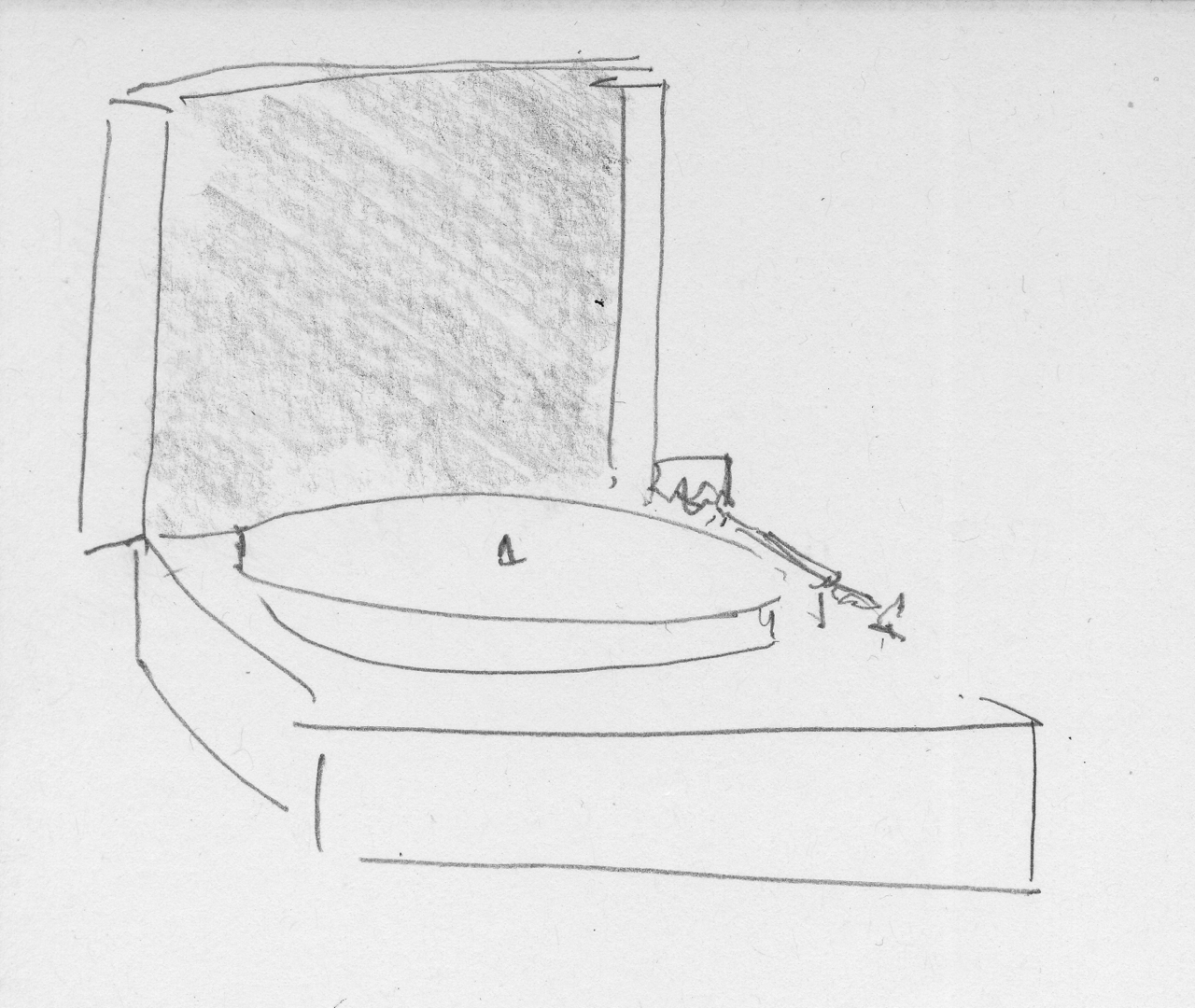 Just recently I finished (I think) writing seven pieces for what I’m calling a double trio – piano, bass, drums, violin, viola and cello. This work is going to be performed for the first time in the Salon at the Melbourne Recital Centre on October 15. The project has roots here and there. Part of my pitch for the Professional Development Award I won through APRA three years ago was that I wanted to begin to compose for instruments other than those in my regular trio, so here’s a first crack at that. I have been for some time trying to think about the formal character of the music we play and whether ‘head – solos – head’ is really all we can manage. The piece written for the Wangaratta Festival in 2012, entitled Here from home, was about that too, although it was a single, lengthier composition. The MRC wanted, for the two concerts I was to give there this year, things that differed from regular trio shows or stuff I might be doing elsewhere anyway. (Sorted.) Most importantly though this is a chance to play with some people I’ve known for quite a while with whom I’ve never previously had the opportunity to collaborate. I can’t wait to share the stage with them. I can’t wait.
Just recently I finished (I think) writing seven pieces for what I’m calling a double trio – piano, bass, drums, violin, viola and cello. This work is going to be performed for the first time in the Salon at the Melbourne Recital Centre on October 15. The project has roots here and there. Part of my pitch for the Professional Development Award I won through APRA three years ago was that I wanted to begin to compose for instruments other than those in my regular trio, so here’s a first crack at that. I have been for some time trying to think about the formal character of the music we play and whether ‘head – solos – head’ is really all we can manage. The piece written for the Wangaratta Festival in 2012, entitled Here from home, was about that too, although it was a single, lengthier composition. The MRC wanted, for the two concerts I was to give there this year, things that differed from regular trio shows or stuff I might be doing elsewhere anyway. (Sorted.) Most importantly though this is a chance to play with some people I’ve known for quite a while with whom I’ve never previously had the opportunity to collaborate. I can’t wait to share the stage with them. I can’t wait.
I’ve said before how important the matter of friendship is in the making of music. When I hear friends play, people I’ve either played with myself or simply followed over the years, there is something extra to the experience, something particularly moving and humbling, and I’ll call it love. So I’m now going to play with these friends of mine, as well as with Ben and Dave, who are obviously dear friends too, and I’m really looking forward to it all. The pieces are collectively titled with whom you can be who you are, and six of them bear the initials of individual friends of mine as their titles. [EDIT: Actually they all do.]
See friendship is something I think about quite a bit. If I were to do a blog post that came from somewhere else, that had nothing to do with music, I’d write about the dynamics when you meet people in the school yard or at the park, and how communication begins, and when you think you might strike up a friendship, and how sometimes this seems possible and sometimes it clearly, absolutely, doesn’t, because there are all these murky things that go on when people relate to one another and try to read what’s happening and occasionally misread it or simply don’t permit themselves to participate, for reasons of their own. How when you meet someone and things seem to be going well and you think well why don’t we have a cup of tea and you put the idea up but then maybe because you’re a boy and she’s a girl or possibly because something happened long ago that you don’t know about or perhaps just because people are always saying this you get knocked back and then it’s clear there were doubts about your intentions, even though you honestly and sincerely had none apart from drinking tea and talking. Being, that is, friendly.
But look, just now I’m not going to write that post. I say it only since it is something to which I’ve given a great deal of thought. And this is the context of the music: playing with friends, thinking about friends and friendship. Seven world premieres at the Salon on October 15.
Because of all this composition however, and because such projects once underway are apt to thrill and depress me in equal measure, I was obviously going to be distracted by something. The month just gone was also Dry July, in which I didn’t touch alcohol other than on the 11th (my brother’s birthday) and the 26th (celebrating Sall’s and my wedding anniversary, which falls the following day).* And these were authorized omissions, according to the Dry July rules. (It’s funny, because a day off is granted with possession of a Golden Ticket, and these are had for a donation of $25 or more. Because the whole Dry July thing is based on a charity to assist adults living with cancer, the more days you take off, i.e. the more you drink, the better the charity does. As the sober purpose is arguably defeated.)
I thought, well, I have to get this music written and I’ve set myself the deadline of the end of July. How much more easily to make a month fly by than to have a compositional deadline waiting at the other end of it? Sobriety will barely be registered amidst the pressure of getting the music on paper. Right? But then of course there was the distraction, and it came from a somewhat unexpected place.
Perhaps you remember 1989, provided you were born then. On February 12, 1989, at 8pm, I was waiting at Festival Hall for the Go-Betweens to come on stage, prior to the headline appearance of R.E.M.‡
The Go-Betweens were probably my favourite band of the 1980s, and certainly they were my favourite Australian one. They did incredible things like changing the words of their songs, in performance! and stuff like that. I was there with a couple of friends, one of whom has since died. Whenever I hear R.E.M.’s ‘So. Central Rain’ I see his face, dancing at Festival Hall. It’s one of only a handful of strong memories of that night: Michael Stipe with a chair as a prop, ‘Superman’ being sung by Mike Mills (although I remember it as an encore, which apparently it wasn’t), the Velvet Underground’s ‘After Hours’ as the final selection. The Go-Bs changing the words. R.E.M. toured Australia a couple of times after that, I think, but I never heard them live again.
I was put in mind of R.E.M. when Ian Thorpe came out, and I recalled Michael Stipe doing something similar after many years of vagueness, and saying (as I recollect it) that probably he should have done it sooner since they had so many young fans, some of whom might have been helped by the example. This is only my memory, and it may not be accurate. But I was reminded of R.E.M. So out came the LPs, Life’s rich pageant, Document, Murmur, Green (I stuck my concert ticket stub on the inner sleeve of that one, as it was the album they were touring), and the CDs, Monster, Automatic for the people, and so on. And I played them again.
I wish I had the language to describe what it is to hear this stuff again after a long time without it. To portray the levels of connection and relation that seem to be endemic to these sounds, for me. There is so much about the time in which I met this music that I wish to forget, so many things of which I don’t wish to be reminded, but it’s almost as though the music had preserved only the bits that were worth knowing. And they’re not even actual solid things, like ‘she said this’ or ‘we went here’ or ‘that’s how the issue was resolved’. Can music like this actually preserve the youthful hope and excitement that was felt, against the elapsing of twenty-five years? If so, how? I don’t want to be seventeen again. I recall myself at that age with nothing short of horror. I am not mourning the loss of any enthusiasm I had for the future, in 1989. And I have absolutely no sadness at all when I listen to these records. Nor do I wish to be a pop star or to replicate anything that I’m hearing. I’m not even sure what’s happening. But the music is implicated. Memory, friendship, the whole thing. What the music holds. I hope this makes sense.
*Long-term readers of this blog – both of them – will recall my giving up drinking some time ago. For a while, I did. But I took it up again. It’s forever a work in progress.
‡This site claims that the Hoodoo Gurus supported as well but I have no memory of this. Dave Faulkner, if you’re reading, and you were there, I apologise. I was a Gurus fan, and I have several Gurus albums, but I can’t remember your being at Festival Hall that night. Not at all. And as a side note: how curious is it that there are websites that can give you set list details for concerts that predate the internet by years? I mean I found this, and this, and the one above.
11/viii/2014
